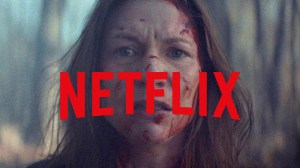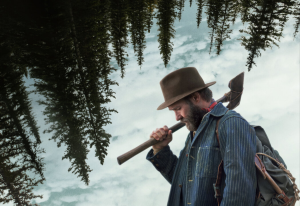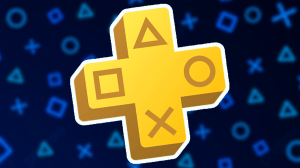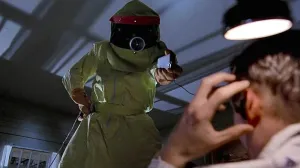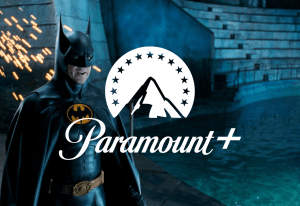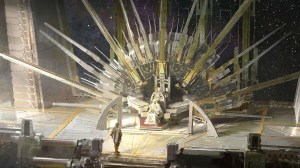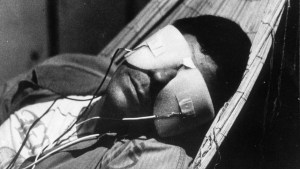Netflix’s adaptation of Andrzej Sapkowski‘s The Witcher has pleased longtime fans of the franchise and brought new fans on board as well, and whether you’re a fan of the original novels or the hit video games from CD Projekt Red, it’s more than likely you noticed a few cool nods to both throughout season 1. Some are pretty obvious, but there are plenty of others that might have slipped past your radar, and some that won’t even really come into play until season 2, so we’re here to break them all down for you in one handy dandy place. Whether you’ve read every book 10 times, finished 3 playthroughs of the game, or are just starting either one for the first time, here are all of the references, Easter Eggs, and ties we found to the greater Witcher world in season 1!
Videos by ComicBook.com
If you don’t have time to check out our full rundown, you can find a quicker rundown of some of our favorite ties and Easter Eggs in the video above, and if you want to find out more about season 1 you can check out my full review right here!
The official description for The Witcher can be found below.
“Based on the best-selling fantasy series of books, The Witcher is an epic tale of fate and family. Geralt of Rivia, a solitary monster hunter, struggles to find his place in a world where people often prove more wicked than beasts,” Netflix said. “But when destiny hurtles him toward a powerful sorceress, and a young princess with a dangerous secret, the three must learn to navigate the increasingly volatile Continent together.”
Without further ado hit the next slide to check out all the Easter Eggs, and you can check out more from our Witcher coverage right here. You can also hit me up on Twitter @MattAguilarCB for all things Witcher!
Kikimore

At the very beginning of the show we see Geralt take on his first monster of the series, and it’s none other than a Kikimore. The Kikimore is familiar to fans of the books and the games and is an insectoid creature that typically lives in swamps. We see Geralt hunting on in a swamp, though we’re not sure if it’s a worker or a warrior class Kikimore.
That said, it’s probably not a Kikimore Queen, but as you can see, even worker and warrior Kikimore’s are quite deadly.
Elixirs

Fans of the books and the games are well versed in Potions, Elixirs, Oils, and Tonics, and in the show, we do see Elixirs used several times by Geralt. The effect can be seen in his face, as the blood vessels pop up and turn black, and his eyes also turn completely black when this happens. Depending on the monster or opponent he is facing, this will enhance his strength, endurance, healing, and eyesight, though we only see it really affect his strength and endurance in the show.
In the games, he also uses a variety of oils, which can be used to coat his silver sword. Those oils increase the damage and affect creatures in various ways, either by causing bleeding, stunting adverse effects, or other abilities, and each one caters to a different creature.
Renfri

Renfri is actually one of the most accurate translations in the whole of season 1 of The Witcher. Things play out remarkably close to the book for her, though in different order, as we don’t actually meet Renfri until the third chapter of the book The Lesser Evil, but in the show we meet her in the first 10 minutes.
We also see her leave a large lasting impression on Geralt, represented in her broach, which factors into Geralt’s dealings several times throughout the show.
The Voice of Reason
Fans will also hear a The Voice of Reason mentioned, and that’s a reference to the book of short stories that inspired season 1 The Last Wish. The Voice of Reason is actually the story that runs throughout all the short stories, and a piece of it sets up every major chapter in the book. In this framing story we meet or learn more about Nenneke, Yennefer’s travels, the Order of the White Rose, Vesemir, Kaer Morhen, Dandelion, and more.
The Wild Hunt

At one point Queen Calanthe mentions The Wild Hunt, which fans of the book and games will instantly recognize. The Wild Hunt are legendary, and while they don’t appear in the books until Time of Contempt, they play a huge role right from the get-go in The Witcher 3: The Wild Hunt, as they are attempting to track down Ciri.
Being that they are in the second book, it might be a while before we see them in the show, but we cannot wait!
Cahir

Cahir quickly becomes a big-time threat to Ciri and by proxy Geralt in the show, killing Mousesack and putting a doppler in his place to try and get Ciri. He might seem like just another antagonist, but in the books he becomes something quite different, eventually even teaming up with Geralt and Dandelion (Jaskier) in their hunt for Ciri, so if the show takes on that aspect of the books we could be in luck.
Istredd

We meet Istredd early in Yennefer’s journey in the show, and in the books, he also plays a part in her life. That said, unlike the show, he crosses paths with Geralt, also a lover of Yennefer, and that encounter does not go well. They even end up almost dueling to the death over Yennefer, but that fight never happens thanks to Yennefer’s intervention. Istredd already closed the door on his relationship with Yenn in the show, but who knows, maybe he comes back around.
Graveir
In episode 1 we hear the mention of a Graveir, though we don’t actually see one in the show. A Graveir is a spin on a traditional Ghoul, but is much larger. That said, they share one big similarity with Ghouls, and that’s eating the dead. You can find Sapkowski’s description of them from Blood of Elves below.
“A graveir is a type of ghoul. It looks very much like a ghoul but is considerably larger. He can also be told apart, as you can see, by these three bony combs on his skull. The rest is the same as any other corpse-eater. Take note of the short, blunt claws, adapted for digging up graves, and churning earth. Strong teeth for shattering bones and a long, narrow tongue used to lick the decaying marrow from them.”
Stregobor

Netflix’s take on Stregobor is also pretty spot-on, though he looks to be playing a bigger role in the show than he does in the books. In both places, he is a member of the Brotherhood of Sorcerers, who end up playing a role in the Battle of Sodden (though he is not one of them). He is featured heavily in The Lesser Evil storyline, and just like in the book we see Geralt choose not to let him do an autopsy on her, confirming his mutations theory.
The Lesser Evil

The Lesser Evil is one of the most popular stories in The Last Wish, and centers around the conflict between Renfri and Stregobor. While there is a general lesson that Geralt takes form this story (especially in regards to the title he ends up with as a result), it is much more pronounced in the show, as The Lesser Evil is constantly referred to throughout all of season 1.
Skelligan Ships

At one point early on we see Queen Calanthe and King Eist refer to Nilfgaard’s potential invasion, and Calanthe writes it off due to Cintra’s famed army and the 50 Skelligan ships that are on the way. It turns out that those ships don’t get there in time, but fans will definitely recognize Skellige, an area of the world made up of several islands. That especially goes for those who have played The Witcher 3, as you spend quite a bit of time there about midway through the game.
Nilfgaard
In the show fans quickly see the damage that Nilfgaard can do, as they invade Cintra and conquer it rather quickly. Thing the Empire in Star Wars and you have a pretty good idea of how its viewed, as they have power all over the world and many small rebellions and forces oppose them, but they are just too big to completely take down.
As for Cintra’s fall, that is actually something that happens in Sword of Destiny, but there’s plenty more to pull from when it comes to Nilfgaard in season 2.
Vesemir

Vesemir has been a father figure and mentor of sorts to Witchers like Geralt, and plays a much bigger role in the games and books than he does in season 1 of the show. He is also the only one who survived the assault on Kaer Mohen, the place where Witchers are created and trained.
Ithlinne’s Prophecy

During one point in the series Fringilla and Cahir are speaking and the phrase “The time of the sword and axe is nigh”. That refers to Ithlinne’s Prophecy, a prophecy made by Ithlinne, the elven prophetess. It’s frequently brought up in the books all throughout the series, including the final book The Lady of the Lake, and you can find the full prophecy below.
“Verily I say unto you, the era of the sword and axe is nigh, the era of the wolf’s blizzard. The Time of the White Chill and the White Light is nigh, the Time of Madness and the Time of Contempt: Tedd Deireádh, the Time of End. The world will die amidst frost and be reborn with the new sun. It will be reborn of Elder Blood, of Hen Ichaer, of the seed that has been sown. A seed which will not sprout but burst into flame.
Ess’tuath esse! Thus it shall be! Watch for the signs! What signs these shall be, I say unto you: first the earth will flow with the blood of Aen Seidhe, the Blood of Elves…”
Aard Sign

The Aard Sign is one of several magical signs that Witchers can use, and we see quite a bit of it in the show, Geralt uses it in the first episode, and for those who are unfamiliar the Aard Sign is a telekinetic blast that can send someone flying off their feet. It’s used in the books and the games, but what’s great is how novel the uses are in season 1, showing Geralt use not just the blunt force blast version of it but also as a tool to get out of sticky situations, like in the fight with the Striga where he blows the floor apart to get away from her.
Axii Sign

The Axii sign is also used in episode one but in a much more subtle way. It appears when Geralt moves his fingers and holds a green like mist in his hands when he tries to talk down Renfri, but she reveals she is immune to magic.
The Axii sign is used to manipulate minds, allowing a Witcher to hypnotize as it were a person or creature. He can use it not only to get his way but also make someone fight by his side, and in the games he often uses it to settle down his horse Roach if she gets rattled.
Tower of the Gull

There’s a quick mention of a location called the Tower of the Gull, and this refers to a place on Thanedd Island called Tor Lara. It’s most known for containing an unstable portal, and at one point Ciri uses it to escape her pursuers.
Stars Reflecting in the Pond

In one episode we hear the phrase “You can not mistake the stars reflecting in the pond for the night sky”, which is a phrase fans will recognize from the books. The phrase is used quite a bit in the second book of the main series, Time of Contempt, and we imagine like other phrases (such as the Lesser Evil) it will come back around in season 2.
Butcher of Blaviken

Throughout the show, the books, and the games, a title that follows Geralt around is Butcher of Blaviken, and as we see in episode one, there is a good reason why. Geralt ends up destroying Renfri’s men in bloody fashion, and after he killed them and Renfri (regrettably), he is forced to leave the town and is pelted with stones on the way out, and the name has followed him ever since.
Grain of Truth
Another phrase that is mentioned is “Grain of Truth”, and this is also a reference to one of The Last Wish’s other most popular stories. In Grain of Truth, which has been hinted at for season 2, Geralt and Dandelion meet Nivellen, a man who has been cursed and turned into a beast. His mansion is full of interesting things and people, including one who turns out to be a Bruxa, who is key to lifting the curse.
Fringilla

One of Tissaia’s students at Aretuza was Fringilla, and in the books, she is a member of the Lodge of Sorceresses just like in the show. As seen in the Battle of Sodden, she also fights on Nilfgaard’s side, though she doesn’t blind Yennefer like she does in the novels. She also hasn’t entered into any kind of relationship with Geralt, but there’s also still time for that to happen in the show.
Sabrina

Sabrina plays a smaller role in both the books and the show, though she has a bigger role in the game series. We actually meet her earlier on in the show then we do in the books, as she doesn’t show up until Time of Contempt. She also plays a part in the Battle of Sodden here.
Torque

Torque is a memorable creature that Geralt and Jaskier meet in Posada, and he’s known as a Sylvan. The show takes a lot of inspiration from the books here, as Torque has big eyes and like the book’s description appears to be more of a goat. You can check out Sapkowski’s official description for The Last Wish.
“The creature was about half a rod tall with bulging eyes and a goat’s horns and beard. The mouth, a soft, busy slit, also brought a chewing goat to mind. Its nether regions were covered with long, thick, dark-red hair right down to the cleft hooves. The devil had a long tail ending in a brush-like tassel which wagged energetically.”
Filavandrel

In episode two we meet Filavandrel, who is the leader of a group of Elves that refuses to live with humans due to what they did to the Elves in the past. Like in the books, they are the ones who got the Sylvan Torque to help them steal food from those who wandered into his territory. Things play out quite a bit like in the books, though in this version we do not see the Queen of the Fields appear.
King Foltest
In episode 3 we meet King Foltest, who is at the center of the book’s first story The Witcher. Like in the book we see Foltest as King and asking the Witcher to lift the curse off of his daughter Adda, who has been turned into a vicious Striga, and while there are some changes involving other characters, this main part of the story is pretty much right from the books.
Jaskier

Jaskier is the original polish name of the Bard who goes by Dandelion in the English novels and hit games, but the show decided to go with the original version of the character. Like in the books he provides the yin to Geralt’s yang, and also like the books is a bit more introspective and thoughtful than he is in the games. If you’re a fan of the character from any medium, you’ll definitely love the show’s version as well.
Triss Merigold

Triss Merigold doesn’t actually appear in The Last Wish but shows up about midway through season one of Netflix’s show. In the books, she first appears in Blood of Elves, the first chapter of Witcher’s main saga, but in the games, she has an even larger presence, and we hope the show follows that path a bit more, just from an importance standpoint.
In the games, she is also a major love interest for Geralt, as the player has to decide between a relationship with Yennefer or Triss, and it will be interesting to see if the show also adopts that love triangle.
Striga

Episode 3 of The Witcher introduces fans to a Striga, and fans from the books know that a Striga is a woman who has been cursed and turned into a lethal and rather hideous creature. The curse can be applied to the person before birth, and as revealed in the novels, King Foltest’s daughter Adda was born this way and grew inside a sarcophagus, eventually emerging as a Striga. It is only through reversing the spell and keeping her inside a certain area until the rooster crows that Geralt lifts the curse, but in the books, he still tells Foltest that she could be affected by the curse again if she doesn’t continually wear a certain necklace.
Brokilon Forest

In episode 3 we see Ciri encounter the Brokilon Forest, which in the books is known as the Forest of Death. The Dryads live in this forest, and guard it fiercely, as few would dare even approach it without expecting some casualties. It’s here that the forest’s water is also mentioned, though it doesn’t seem to be like the waters in the books.
Those waters allow people who drink of it to lose their memories, making them forget anything that existed outside of the forest. It can also allow Dryads to witness visions, and it seems there was a bit more of Brokilon Firest planned for the show before some final decisions were made, so maybe this was a part of that cut material.
Conjunction of the Spheres
At one point we hear the term “conjunction of the spheres” said, and that refers to a major event in the world that occurred around 1,500 years before the books begin. This event is what brought unnatural creatures into this dimension, and that includes many of the creatures we’ve come to know, including ghouls and vampires, who all came through rifts that started popping up all over the world.
This is also where the world’s magic came from, or chaos as its more often called, which was eventually mastered by sorcerers like Yennefer.
Mousesack

Fans of the books and the games will know Mousesack, the sorcerer who places the utmost importance on tradition and destiny. He also goes by Ermion at times and ends up as an important character in Queen Calanthe’s court and the events that play out in Cintra, leaving Geralt with the impression that destiny means something and that he should not leave Cintra.
Pavetta

Fans eventually meet Princess Pavetta in the show, who just like in the books is the daughter of Queen Calanthe and, unbeknownst to her when Geralt first meets her, the mother of Ciri. It is eventually revealed that she is not only powerful but also in love with Duny, a man who has been cursed with a hedgehog-like face, but it’s Geralt and King Eist that manage to help him reason with Calanthe. This is also when the Law of Surprise makes another appearance, paving the way for Geralt’s meeting with Ciri.
Law of Surprise

The Law of Surprise comes up quite a few times in the books and the show and is enacted when one man saves another. The law dictates that the person saved will offer the savior a gift that is unknown to him at the time and more often than not ends up being a child they were not knowledgeable of. We see this claimed with Duny, and then subsequently Geralt does the same thing, which unbeknownst to him ends up being Ciri.
Dimeritium
At two different points in the show, we see Dimeritium used, a metal that can suppress magical powers. Both Tessia and Mousesack are hindered by it, but in both cases, it is applied differently, once as a mist-like spell from Fringilla and another as a liquid (also by Fringilla). In the books, it is used more as a metal, and Dimeritium shackles are applied to Vilgefortz, Artaud, and even Yennefer at one point to keep them from using their magic.
Time of Conempt

A reference is also made to Time of Contempt, which is the 2nd book in the main Witcher saga (after Blood of Elves) and is the 4th book in the series overall (though the first two are short stories that were published later).
This book features Yennefer attempting to get Ciri to Aretuza (the school where she was taught the art of magic), but so far Yennefer and Ciri have yet to meet in the Netflix show, so we’ll have to wait and see if the show follows suit.
The White Flame

The White Flame is a reference to the followers of Emperor Emhyr var Emreis, who is the ruler of Nilfgaard. The White Flame comes from the fact that he is known as Deithwen Addan yn Carn aep Morvudd, and translated in Elder speech that means White Flame Dancing on the Barrows of His Enemies.”
The White Flame is merely mentioned here, but we imagine it will prove to be a bigger player in season 2.
Vilgefortz

One of the mages we meet in the show is Vilgefortz, who stands with the other mages at the Battle of Sodden Hill. He’s pretty slick what with his magic swords, but in the books, there is more to him than an altruistic but reckless mage. He ends up pursuing Ciri in the books and is in league with Nilfgaard, and even tortures Yennefer at one point. That said, we aren’t sure if he will make that same jump in the show, but we would bet on it happening eventually.
Dopplers

Later in the season, we see the first appearance of a Doppler, though it has already taken human form when we see it in the show. In the books, Dopplers are described as rather hideous, with long noses, yellow eyes, and elongated limbs and tongues. In the show, we only see the Doppler transform once, but he appears a bit different even in his normal form.
In the books, it is also described that they can use their abilities to create items, clothes, or weapons, but if it ever loses contact with their body it will turn into torn flesh.
Sword of Destiny

The Sword of Destiny is the second series of short stories written by author Andrzej Sapkowski, and while season one of The Witcher doesn’t draw from it as much as The Last Wish, there’s quite a bit that makes its way into the show. From the Brokilon Forest and its importance to the entire Battle of Sodden, those are all from the second book, and there’s still quite a bit left to mine for season 2.
Hirikka

In episode 6 Jaskier happens upon a Hirikka, a creature that we don’t meet in the books until Sword of Destiny. They are described as extremely rare, and while the one in the show unfortunately dies, they aren’t treated as overly aggressive.
This Is A Little Tight

During Geralt’s initial meeting with Yennefer, the two share some entertaining banter, and any fan of the games will recognize the moment when Yennefer gives him some new clothes to wear and he isn’t too thrilled. He pulls on them and says “this is a little tight”, something he frequently comments on in the games anytime Yenn makes him dress up.
Lilac and Gooseberries

In the games, your first main quest is actually titled Lilac and Gooseberries, and Geralt often says this in regards to Yennefer’s perfume and knows if he smells it she is close. In the show, he says this after smelling the spell she has used to put him to sleep, and he then wakes up in chains in the dungeon.
Bath Tub Geralt

This is one of the biggest memes of the last decade thanks to Witcher 3, which had Geralt in a bathtub during several sequences throughout the game, though one especially comes to mind. Thanks to that the sequence became a GIF and Meme favorite on social media, and now it’s found its way into the show, with Geralt appearing in a tub early on during a humorous sequence with Jaskier as well as a memorable sequence later on with Yennefer joining him.
Kaer Mohen

Kaer Morhen is an old fortress that used to house a Witcher school, specifically the School of the Wolf. It’s where Geralt was trained by Vesemir, though these days it is not in use. In the books and also in the show we learn the old keep has fallen, and while Geralt and other Witchers use it as a place to stay and make camp at, it isn’t actually producing more Witchers any longer.
While Vesemir survived the mob that attacked the fortress, he has no knowledge of the Trial of the Grasses. That process is what actually creates Witchers, but everyone with that knowledge died in the battle, so he’s merely been able to train the ones left and help them when he can. We did not see the keep in the show just yet, but there is concept art for it already, which means we are likely to see it in season 2.
Golden Dragon

We got a chance to meet a Golden Dragon in episode six, who in the books is known as Villentretenmerth. Like in the novels he can transform himself into human form, and he does so alongside Tea and Vea, two Zerrikanian women who act as his defenders. We also see him defending another dragon, though we never find out if the mother is Myrgtabrakke like in the novels. They do successfully protect his daughter, a crossbreed between a Green and Gold Dragon (further indicating the fallen Green Dragon we see is Myrgtabrakke), and who goes by the name Saesenthessis.
The Last Wish

The Last Wish not only refers to the name of the book of short stories itself, but it also refers to the chapter within it by the same name. In the Netflix series, we see the Djinn’s ethereal form as it causes havoc and struggles to free itself of Yennefer’s spells, and it is Geralt who intervenes and uses his last wish as a result.
In the books, though this sequence is much longer and has Yennefer heading out of the building and into town as she tries to absorb the Djinn’s powers, but that would’ve probably broken the budget of the show.
Nekkers

In episode 8 we see Geralt taking on several creatures that pop up from the ground, and these are known as Nekkers. The little gremlin looking creatures have sharp claws and travel in packs, and their bite is also deadly if you don’t have the right healing potion around. They pop up quite a bit in the games, and especially in damp valleys, and while they are relatively easy to kill if you encounter one of them, that’s rarely the case.
You can find the bestiary entry for Nekkers from Witcher 3 below.
“A lone Nekker is harmless. Five are dangerous. Ten can kill even a veteran monster slayer. Particularly troublesome are the larger, stronger individuals known as warriors, as well as the rare breed of nekkers known as phoocas.
Nekkers and phoocas live in the dark woods that grow in damp, mist-filled valleys, in colonies of one to several dozen individuals. They dig deep burrows for lairs and connect them with a network of narrow tunnels. Using these passageways they are able to move at great speed within and around their colonies.
Nekkers always attack in groups and by surprise. They try to surround their prey as quickly as possible, cutting off all escape routes. Luckily their attack is for the most part disorganized, for nekkers are not gifted with great courage and individual nekkers will often hesitate before overcoming their fear and striking. When fighting them one can use this moment of hesitation to kill the braver individuals before finishing off those who remain in the back.”

